
IPI’s Methodology for Implementing Sustainable Energy-Saving Strategies for Collections Environments
While greater efforts have been made to teach the theory and potential of sustainable preservation prior to this publication, there were no resources specific to cultural institutions that professionals could turn to for step-by-step guidance in achieving an optimal preservation environment on their own. Institutions committed to identifying opportunities to optimize their preservation environment will be able to use this publication to conduct risk-managed studies without negatively impacting their current preservation quality. This project was funded by the Institute of Museum and Library Services.
Publication Year: 2017
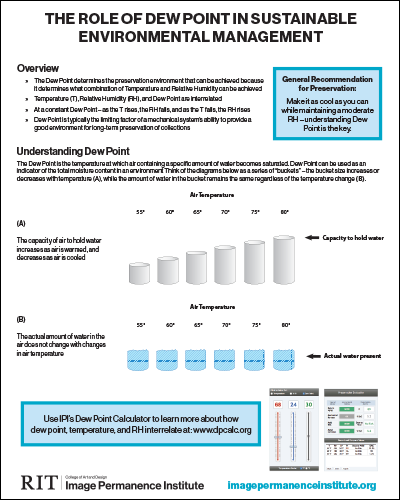
The Role of Dew Point in Sustainable Environmental Management
The Dew Point determines the preservation environment that can be achieved because it determines what combination of Temperature and Relative Humidity can be achieved. This handout helps the reader understand dew point using easy-to-understand illustrations and explanations.
Publication Year: 2016
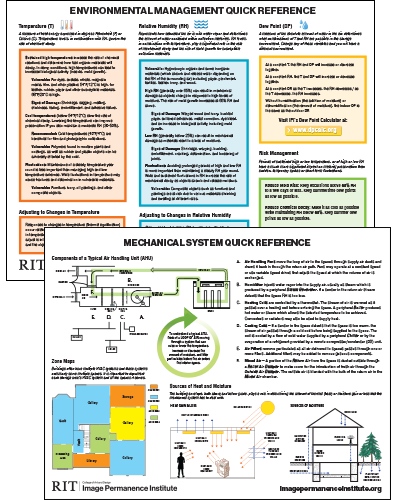
Environmental Management and Mechanical System Quick Reference
On one side of the handout, the relationship between temperature, humidity, and dew point are explained with suggestions for managing the collection storage environment. On the other side, the components of a typical air handling system and sources of heat and moisture are illustrated.
Publication Year: 2014
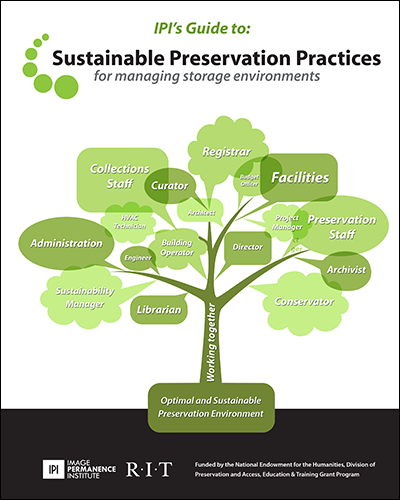
IPI’s Guide to Sustainable Preservation Practices for Managing Storage Environments
This guidebook introduces the fundamentals of defining an optimal and sustainable preservation environment. It outlines the basics of what you need to know to accurately document the storage environment and establish sustainable preservation practices. Funding provided by the National Endowment for the Humanities, Division of Preservation and Access, Education & Training Grant Program. 112 pages, spiral bound, 8.5” x 11”, no quantity discount. Price: $25.
Publication Year: 2012
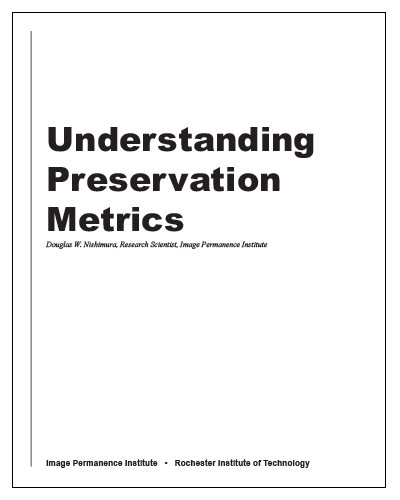
Understanding Preservation Metrics
This document is an attempt to clarify the extremely complex concepts behind IPI’s environmental monitoring metrics, the origins of the values used, the methods of calculation, and other technical issues.
Publication Year: 2007
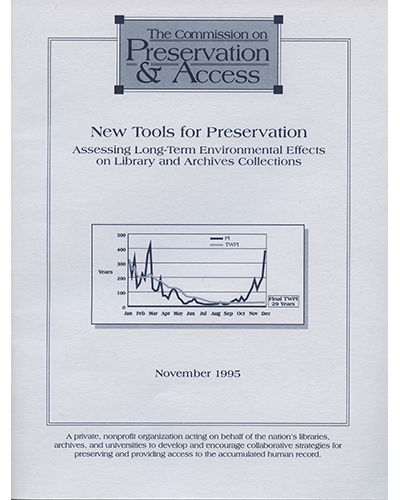
New Tools for Preservation: Assessing Long-Term Environmental Effects on Library and Archives Collections
James M. Reilly, Douglas W. Nishimura, and Edward Zinn. Published by the Commission on Preservation and Access. This publication introduces time-weighted preservation index (TWPI) technology, a concept developed at IPI that provides a new way to measure and quantify the effects of temperature and humidity changes on the preservation quality of storage environments for collections of organic materials. 35 pages, soft cover, 8 1/2” x 11”. $25, no quantity discount.
Publication Year: 1995
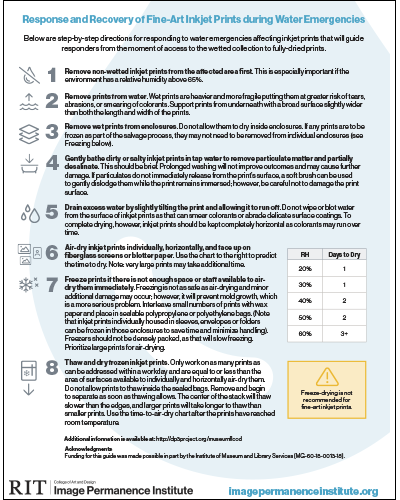
Response and Recovery of Fine-Art Inkjet Prints during Water Emergencies
This guide provides step-by-step directions for responding to water emergencies affecting inkjet prints that will guide responders from the moment of access to the wetted collection to fully-dried prints.
Publication Year: 2021
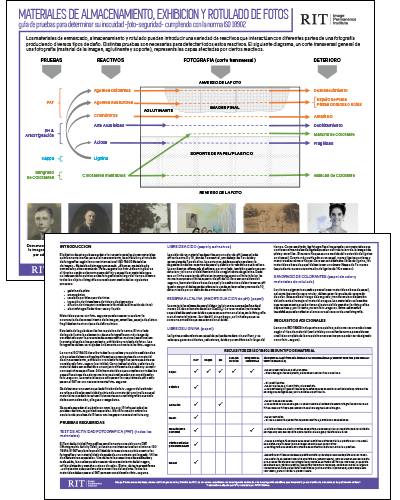
Materiales de almacenamiento, exhibicion y rotulado de fotos - Guía de pruebas para determinar su inocuidad -foto-seguridad- cumpliendo con la norma ISO 18902
This guide includes a description of the standard’s requirements to meet the “photo-safe” designation depending on material type (paper, plastic, adhesive, etc.), as well as an illustration depicting which elements of a photograph are most likely affected by harmful components (reactants) in photo storage, display, and labeling materials, and which tests are necessary to detect each of these reactants.
Publication Year: 2019
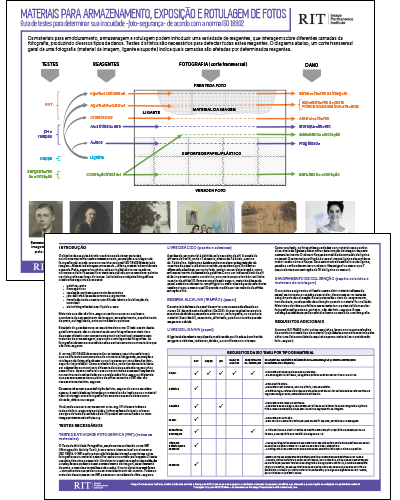
Materiais para armazenamento, exposiçao e rotulagem de fotos - Guia de testes para determinar sua inocuidade -foto-segurança- de acordo com a norma ISO 18902
This guide includes a description of the standard’s requirements to meet the “photo-safe” designation depending on material type (paper, plastic, adhesive, etc.), as well as an illustration depicting which elements of a photograph are most likely affected by harmful components (reactants) in photo storage, display, and labeling materials, and which tests are necessary to detect each of these reactants.
Publication Year: 2019

Photo-storage, Display, & Labeling Materials - A Guide to ISO 18902 “Photo-safe” Testing
This guide includes a description of the standard’s requirements to meet the “photo-safe” designation depending on material type (paper, plastic, adhesive, etc.), as well as an illustration depicting which elements of a photograph are most likely affected by harmful components (reactants) in photo storage, display, and labeling materials, and which tests are necessary to detect each of these reactants.
Publication Year: 2018
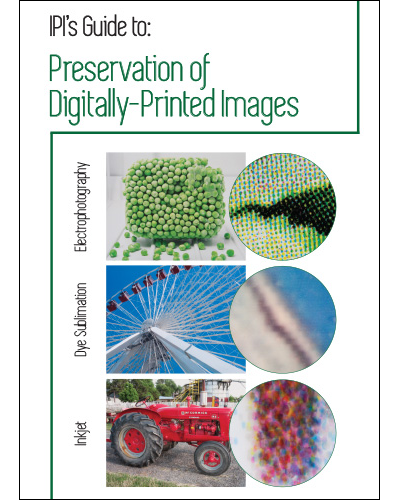
IPI's Guide to Preservation of Digitally-Printed Images
This guide provides basic information on the storage and preservation of digitally-printed photographs in scholarly and cultural collections. While there are many printing technologies for output from computers, this guide focuses on the three most popular forms of image (i.e. pictorial) hardcopy: inkjet, digital electrophotography, dye sublimation. Information on recommended storage conditions, selection of housing and framing materials, proper handling and display are included. Collection care personnel in cultural institutions are the intended audience for this guide, however, it will also be useful to photographers, artists, and the general public.
Publication Year: 2018
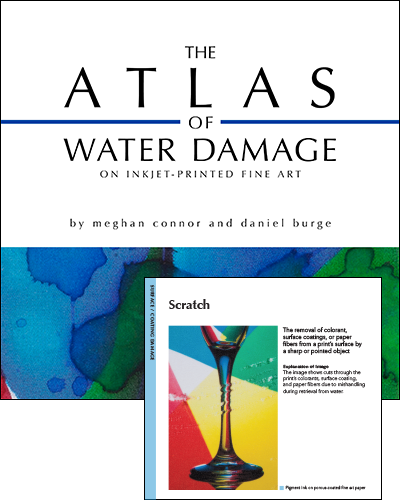
The Atlas of Water Damage on Inkjet-printed Fine Art
This atlas is intended to help readers become aware of the various ways that inkjet prints can be harmed during water emergencies. Each page highlights a different form of water damage that an affect inkjet-printed photographs and fine art. Every water emergency will be different, so prior familiarization with all potential types of damage will help disaster responders understand what has occurred to an object as well as how best to react to and recover their materials during the actual event. Funding provided by the Institute of Museum and Library Services. (Access the online version to look inside the book!) 53 pages, softcover, 8” x 8”, no quantity discount. Price: $25.

Permanent Images: A Personal and Technical Memoir
Dr. Peter Z. Adelstein (2012). This memoir is a look into the past of an accomplished research scientist who has been in the field of image permanence for over sixty-three years. There have been many changes in our understanding of image stability, in recording materials, and in the institutions that are concerned with permanence behavior. In this memoir, Dr. Adelstein recounts significant milestones over the past few decades that are sure to be of interest among scientists and anyone interested in the history of image permanence. In addition, Dr. Adelstein hopes that his personal reflections of some of the outstanding personalities who contributed greatly to the field will be of general interest. 114 pages, hard cover, 6” x 9”. $50, no quantity discount.
Publication Year: 2012
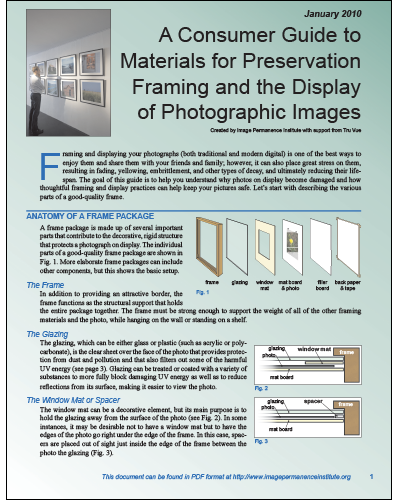
A Consumer Guide to Materials for Preservation Framing and the Display of Photographic Images
Created by Image Permanence Institute with support from Tru Vue (2010). Framing and displaying your photographs (both traditional and modern digital) is one of the best ways to enjoy them and share them with your friends and family; however, it can also place great stress on them, resulting in fading, yellowing, embrittlement, and other types of decay, and ultimately reducing their life span. The goal of this guide is to help you understand why photos on display become damaged and how thoughtful framing and display practices can help keep your pictures safe. Let’s start with describing the various parts of a good-quality frame.
Publication Year: 2010

IPI Media Storage Quick Reference
Peter Z. Adelstein (2009), 2nd Edition. This publication distills key preservation issues for still and motion picture film, glass plate negatives, magnetic tape, photographic paper prints, inkjet prints, CDs, and DVDs. The guide helps the user better understand how the storage environment affects them, both individually and in mixed collections. The IPI Media Storage Quick Reference was created for today’s collection-care professionals, who must provide long-term preservation-quality storage for a growing diversity of collection materials — often in a single storage area. The booklet’s text, diagrams, and tables present the information in an easily accessible format. 10 pages, comb-bound, plus two-sided wheel. $50, no quantity discount. You can click here to download a PDF version of the booklet, but it does not include the wheel.

Photographic Negatives: Nature and Evolution of Processes
Maria Fernanda Valverde, published by the Mellon Advanced Residency Program in Photograph Conservation (George Eastman House/Image Permanence Institute), 2004 Photographic Negatives. This attractive poster introduces the viewer/reader to the technical evolution of photographic negatives over time. The poster features a timeline and images and text describing the eight most important negative types. A complementary PDF booklet is available for download. It offers detailed discussion of the chemical and physical properties of these negatives, recommendations for their safe storage, keys to their identification, their place in photographic history, and much more. Poster (28” x 42”). Download the complementary booklet in PDF format. $10, no quantity discount.
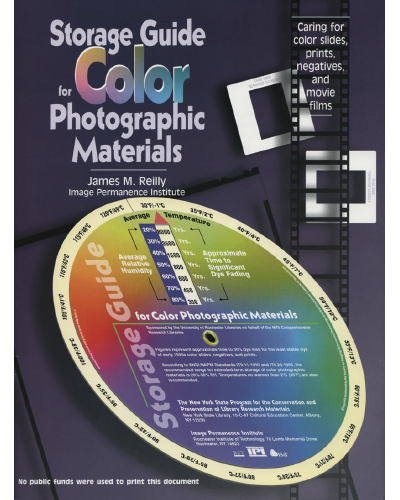
Storage Guide for Color Photographic Materials
James M. Reilly (1998). Published by the University of the State of New York, New York State Program for the Conservation and Preservation of Library Material. This book and accompanying wheel of environmental conditions explains how and why color images fade, why they need special storage, and what can be done to make them last as long as possible. 48 pages, soft cover. This publication (with wheel) is no longer in print. You can download the PDF version for free below (no wheel).
Publication Year: 1998
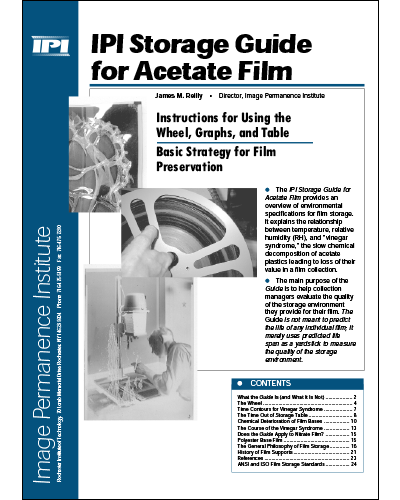
IPI Storage Guide for Acetate Film
James M. Reilly (1993). Valuable quantitative data in practical, easy-to-use form. This guide provides essential information on the effects of temperature and humidity on the rate of acetate film base decay and is a vital tool for evaluating and planning storage environments for all types of acetate film. The booklet discusses environmental specifications for film storage and explains the relationship between temperature, humidity, and the time it takes for “vinegar syndrome” — the slow, chemical decomposition of acetate plastics — to affect fresh film. 24-pages, soft cover, plus wheel, graphs, and table. This publication (with wheel) is no longer in print. You can download the PDF version for free below (no wheel).
Publication Year: 1993
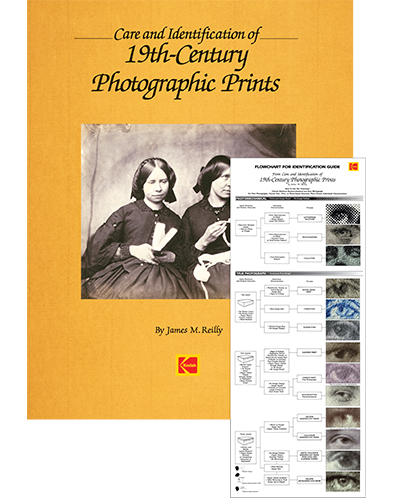
Care and Identification of 19th-Century Photographic Prints
James M. Reilly (1986). Fourth printing (2009). Published by the Image Permanence Institute. Over the years, archivists, curators, librarians, and many others who care for and care about historical photographs have used this important publication as their complete reference handbook on all aspects of the identification and preservation of 19th-century photographic and photomechanical prints. The text presents technical information in plain, understandable language and is supported throughout by high-quality color reproductions showing the various print types and their forms of deterioration. The fine details of print structure are pictured in numerous photomicrographs. A key feature of the book is its practical, detailed system for 19th-century print identification. The pull-out flowchart that comes with each book is an important component in this system. 116 pages, soft cover, 8.5” x 11”. $60, no quantity discount.
Publication Year: 1986
